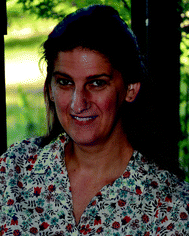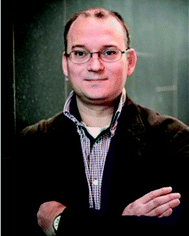Non-innocent ligands
Louise A.
Berben
a,
Bas
de Bruin
bc and
Alan F.
Heyduk
d
aDepartment of Chemistry, University of California, Davis, CA 95616, USA. E-mail: laberben@ucdavis.edu
bUniversiteit van Amsterdam, Faculty of Science, van 't Hoff Institute for Molecular Sciences, Department of Homogeneous Catalysis, Postbus 94720, 1090 GS Amsterdam, The Netherlands. E-mail: B.deBruin@uva.nl
cScience Park 904, 1098 XH Amsterdam, The Netherlands.
dDepartment of Chemistry, University of California, Irvine, CA 92697, USA. E-mail: aheyduk@uci.edu
Redox reactions, bond-making and bond-breaking events and hydrogen bonding interactions all play an important role in chemical transformations. Hence, it is not surprising that reactive and redox-active ligands constitute a vibrant area of research in coordination and organometallic chemistry. We deliberately entitled this themed issue of Chemical Communications “Non-Innocent Ligands” to encompass a large and broad class of ligands that are either redox-active (“redox non-innocent”) or actively involved in bond-making or -breaking processes (“chemically non-innocent” or “cooperative”). In general, all (ancillary) ligands are important: they keep a reactive metal ion in solution, stabilize specific metal oxidation states, and can be used to tune the reactivity of a metal by defining the steric and electronic properties of the complex as a whole. In addition to these important features, redox-active and cooperative ligands offer even more features by actively participating in redox reactions and bond-breaking and bond-making processes.
Based upon the enthusiastic responses from authors contributing to this themed issue of Chemical Communications on “Non-Innocent Ligands”, we are confident that interest in this area of research continues to grow. This collection brings together research communications that span the Periodic Table, including complexes of main group, transition metal, lanthanide, and actinide ions with non-innocent ligands. The fundamental chemical questions addressed in these articles are similarly broad, ranging from the synthesis of new molecules, to discussions of structure and bonding, to the investigation of stoichiometric and catalytic reaction chemistry.
Several of the articles contained in this issue focus on special reactivity gained by the combination of a metal center with a redox-active ligand. The Feature Article by Gallo and coworkers (DOI: 10.1039/C4CC03016H) provides an overview of the application of organic azides for the intermolecular amination of sp3 and sp2 C–H bonds. Bart and coworkers (DOI: 10.1039/C4CC03355H) present an oxidative addition reaction mediated by a U(IV) center where bond-forming occurs at the metal and redox changes occur on the tridentate redox-active ligand. In the work by Szostak and Proctor and coworkers (DOI: 10.1039/C4CC03216K), coordination of Sm(III) to a β-hydroxy acid leads to formation of a C–O bond in the chemically non-innocent ligand, where the O originates from water. The dependence of Cu-mediated nitrene transfer and H-atom abstraction reactions on spin state is described in a communication by Ray and coworkers (DOI: 10.1039/C4CC03754E). Ligand-based oxidation state changes also play a role in metal–ligand bond formation in a series of Cr–azide complexes presented by Smith and coworkers (DOI: 10.1039/C4CC04545A). Murr and Fensterbank and coworkers (DOI: 10.1039/C4CC04487H) utilize a Cu complex of a redox-active imino semiquinonate ligand to manifest umpolung reactivity by coaxing a CF3+ source to deliver a CF3−. Hicks and coworkers (DOI: 10.1039/C4CC04863F) show that the redox-active verdazyl ligand in combination with Pd can affect redox transformations, while Kuwata and Ikariya (DOI: 10.1039/C4CC04457F) describe Ir, Fe, Pd, and Ru complexes of bidentate and tridentate donor ligands in which proton transfer reactivity is facilitated by heterocyclic N atoms. Electrochemically driven C–C bond formation between benzylhalide substrates is featured in a contribution by Sarkar et al. (DOI: 10.1039/C4CC03309D), using Co complexes of redox-active o-iminoquinones as the catalyst.
A second group of the featured articles focuses on the structural and electronic properties that can be obtained using non-innocent ligands. Chang and Otten (DOI: 10.1039/C4CC03244F) describe the transmetallation of redox-active formazanate ligands from zinc to boron, and explore the redox-activity of the resulting boron complexes. Burger and coworkers (DOI: 10.1039/C4CC03624G) describe the formation of bridging nitride complexes of iridium, which are based on the well-known, redox-active pyridine-2,6-diimine ligand. Theopold and coworkers (DOI: 10.1039/C4CC03332A) investigate the structure and spectroscopic properties of [Cr(α-diimine)3]n+ complexes in the redox-states n = 0, 1, 2. Similarly, Cipressi and Brown (DOI: 10.1039/C4CC03404J) probed geometrical distortions of Os & Ru complexes induced by redox changes at α-diimine ligands. The group of Fedushkin (DOI: 10.1039/C4CC04019H) developed a new redox-active metallo-carbenoid ligand derived from the redox-active diimine dpp-bian and coordinated it to molybdenum. Holland and coworkers (DOI: 10.1039/C4CC05495D) show that even the simple pyridine ligand can be redox-active, accepting up to two electrons from low-valent iron ions. Ghosh, Bendix and coworkers (DOI: 10.1039/C4CC02548B) report the synthesis of bis-aryl–platinum complexes with one-electron oxidized corrole ligands, and chart the structural and spectroscopic properties of the oxidized corrole ligands.
From these contributions it is readily apparent that the field of non-innocent ligands is blossoming into a diverse and exciting area of research. The field has matured from a collection of spectroscopic curiosities to a dynamic and fast-moving enterprise that impacts other mainstream research in the fields of catalysis, chemical biology and materials science, while continuing to develop fundamental understanding of electronic structure in coordination complexes. We anticipate that the work presented here is merely the tip of the iceberg when it comes to the chemistry of non-innocent ligand platforms, and we look forward to many more discoveries and revelations that the contributions collected in this themed issue will inspire from the readership of Chemical Communications.
| This journal is © The Royal Society of Chemistry 2015 |



